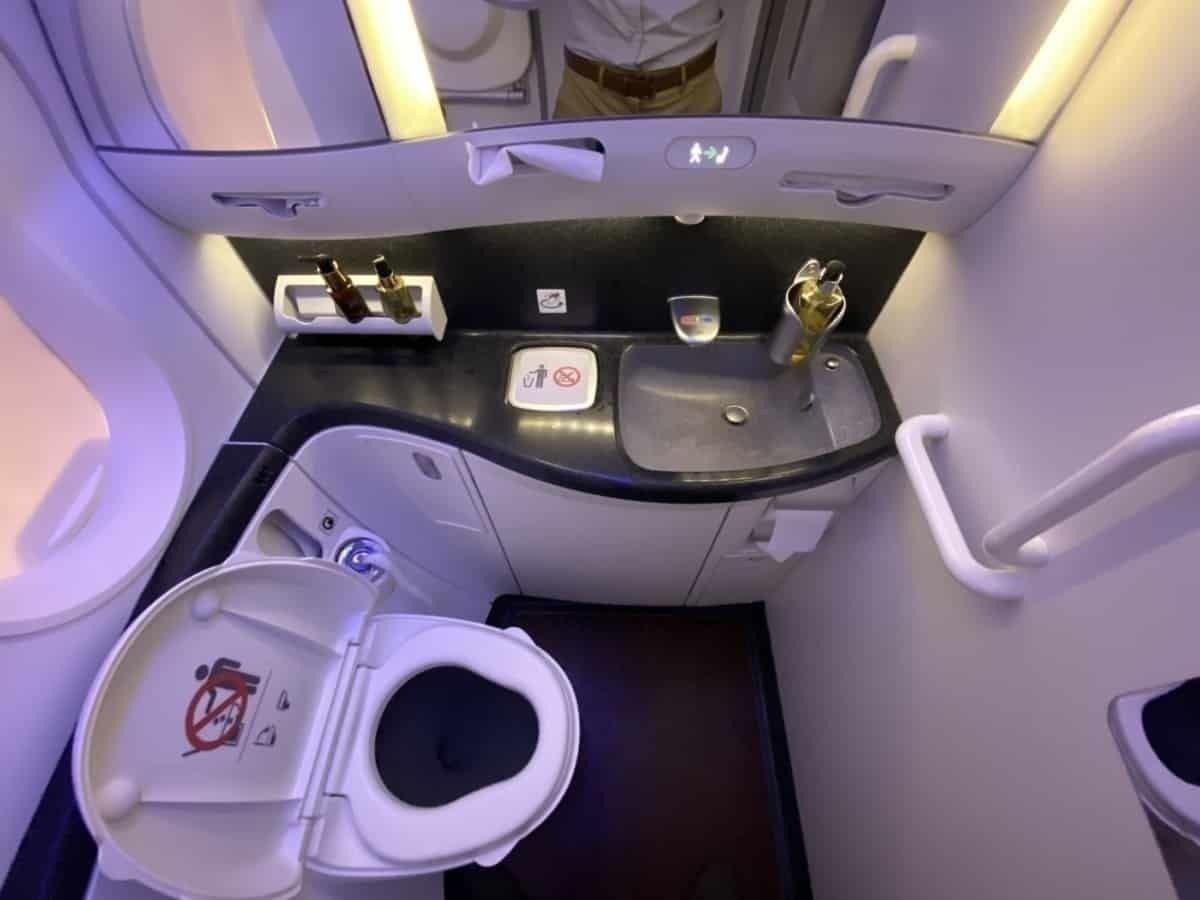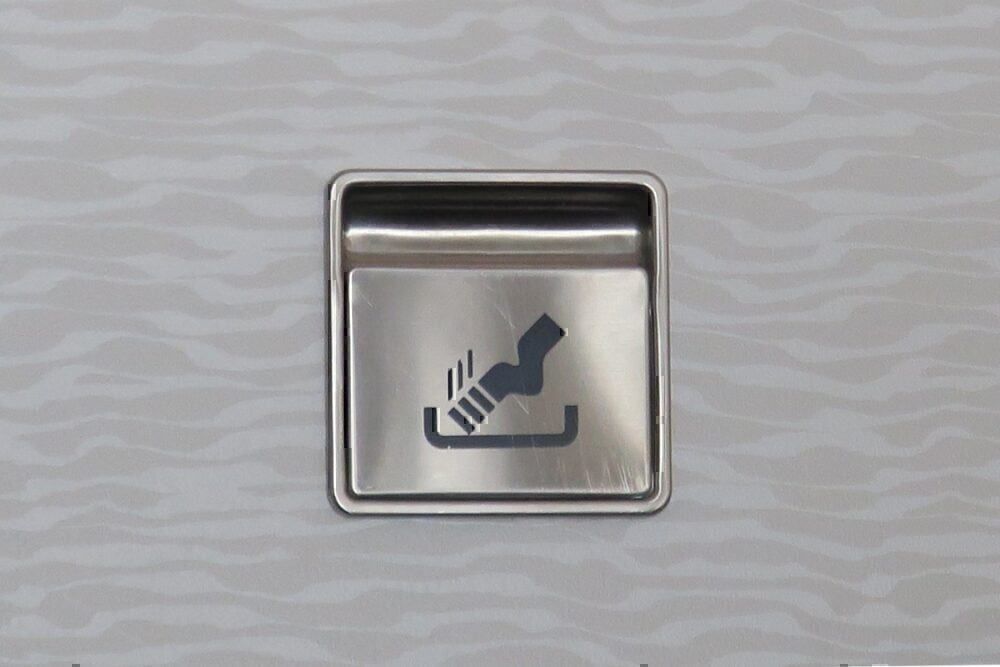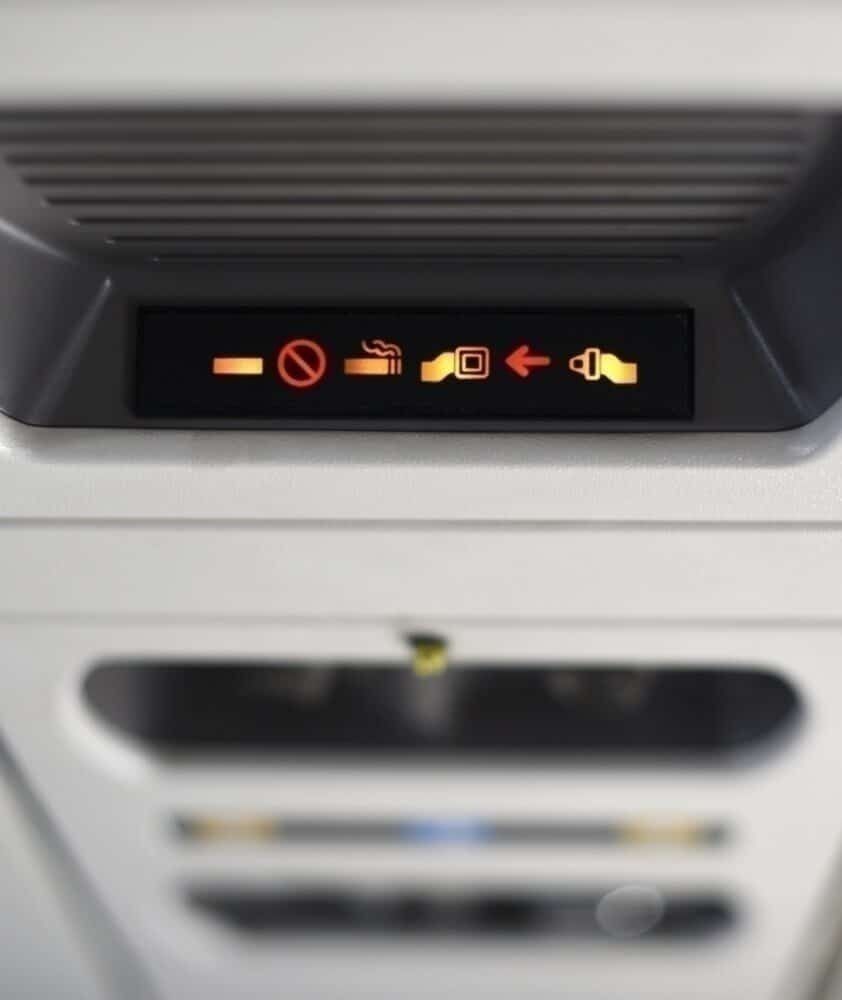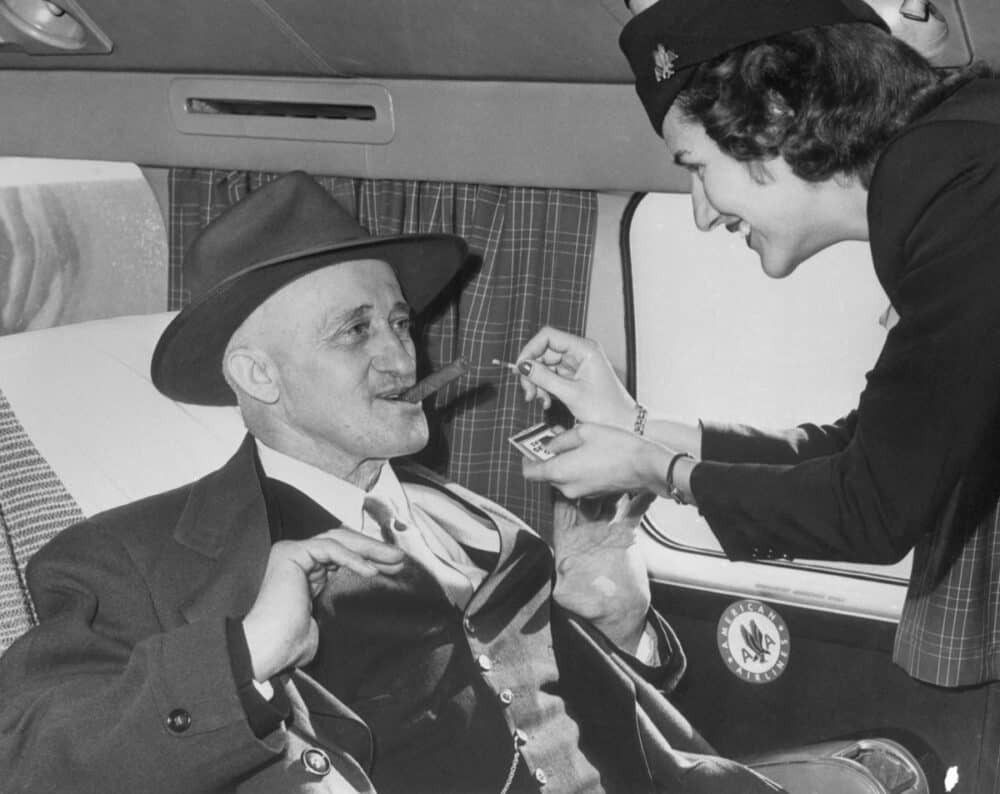If you look near the door of most aircraft bathrooms, you will find an ashtray. This is a strange addition given that smoking on aircraft has been banned for many years. Why is this here, and why do new aircraft still add them? The simple reason is for safety, as this article discusses.
Still putting ashtrays in the bathroom
Most aircraft flying today have a small ashtray placed in the bathroom, usually built into the sidewall near the door. This is undoubtedly a confusing addition when smoking has long been banned. And to make it more confusing, the ashtray is often accompanied by a 'no smoking' notice. Why is this?
Despite the ban on smoking, it remains a Federal Aviation Administration (FAA) requirement to have such ashtrays in the bathroom. The reason is that there should still be a safe place provided to extinguish and place a cigarette, should someone decide (against the law) to light one. An ashtray, of course, is designed for this and is the obvious thing to provide.
The law states (as quoted by the Legal Information Institute):
"Regardless of whether smoking is allowed in any other part of the airplane, lavatories must have self-contained, removable ashtrays located conspicuously on or near the entry side of each lavatory door, except that one ashtray may serve more than one lavatory door if the ashtray can be seen readily from the cabin side of each lavatory served."
We still see cases of people trying to smoke on aircraft. Just last year, Simple Flying reported on a passenger caught lighting a cigarette onboard a Spirit Airlines flight.
Will they remain?
The ashtrays are still added to new aircraft and in refits of old aircraft, and there is no sign of the law changing. The main requirement is a United States FAA one. Still, the standard is adopted internationally, many other countries will mandate it too, and airlines would want to keep aircraft operations flexible. There is a reported case (according to Time) of a British Airways flight to Mexico being grounded due to insufficient ashtrays.
The issue of changing the regulations was raised with the FAA in 1995. The response, in an Airworthiness Directive that year, states that the requirement for a safe and convenient disposal location is still appropriate. It further explains:
"Previous experience and reports have shown that there is a high probability that these persons may deposit the lighted smoking material in the lavatory paper or linen receptacle when no safe and convenient place to dispose of it exists; such actions can result in an in-flight fire aboard the airplane."
Banning smoking
There was a time, of course, when smoking on aircraft was common. Some of the early aircraft even had smoking lounges, and later it remained common to have smoking and non-smoking sections of the cabin.
Smoking was common on flights until at least the 1980s. US airlines started banning it in the mid-1980s, and it was banned on all domestic flights in 1987. It is only since 2000 though that it has been banned internationally (this was when the FAA banned all airlines from entering the US if they permitted smoking).
In China, it remained possible even later. Although banned for passengers, it remained possible (and common) for pilots to smoke in the cockpit. This was only banned in 2019.
Would you like to share any thoughts or details about smoking on airlines? Do you know any airlines that handle it differently? Let us know in the comments.




